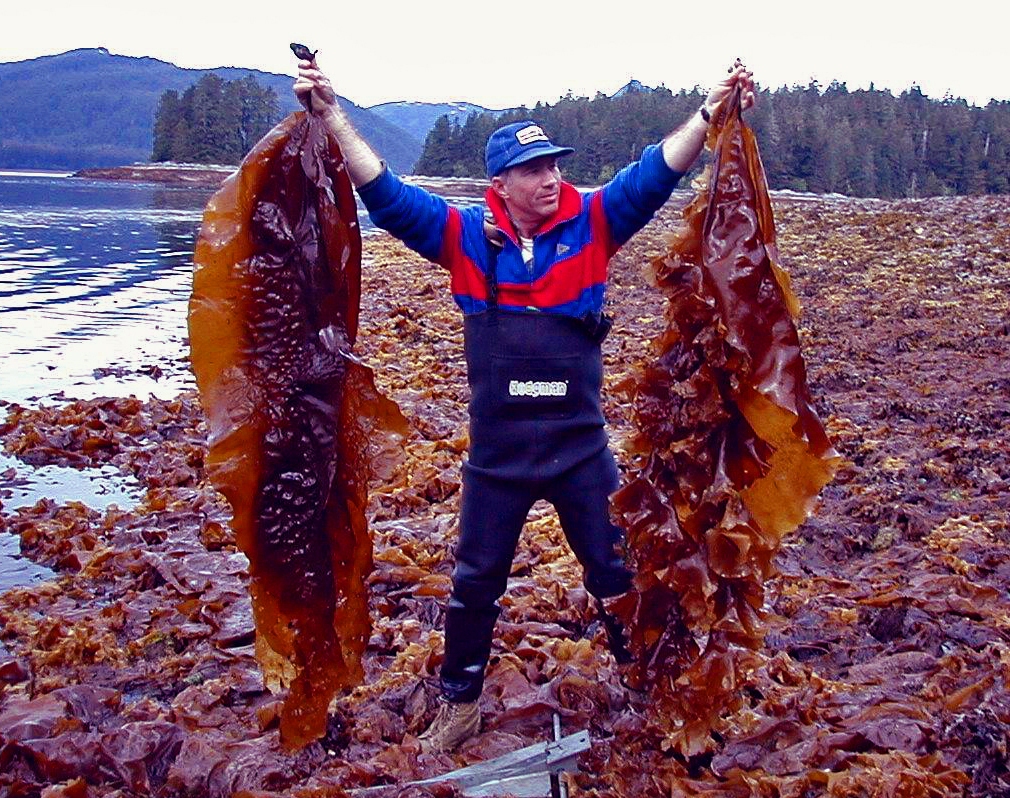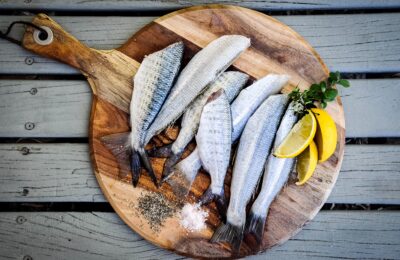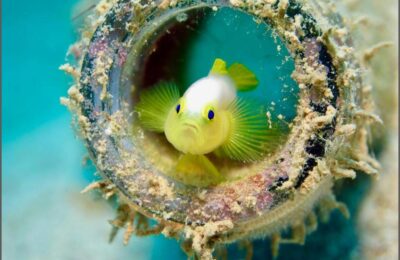What is a forest without trees or a coral reef without coral? Neither a forest nor a coral reef. Entire ecosystems are made possible by the living flora that define them; they provide shelter and hunting grounds for the animals that live in them. But what happens when the building blocks of these ecosystems are replaced or changed? We see this happening with kelp forests in Maine today. Large patches of this tall, billowy algae are beginning to disappear as the Gulf of Maine warms with climate change. As researchers at the University of New Hampshire watched the kelp forests decline, they wondered what would happen to the animals that live there. By looking at the behavior of one fish species, the cunner, they determined that change is indeed on the horizon, but whether this change is good or bad is anyone’s guess.
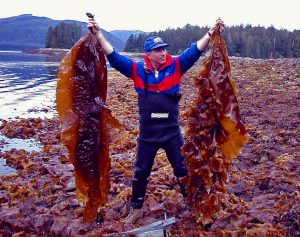
In the southern Gulf of Maine, large kelp beds of Saccharina latissima, a yellow brown kelp that can grow up to 16 feet tall, have been the dominant habitat. However, the region is one of the fastest warming bodies of water in the word, and kelp, a cold-loving species, has begun to be replaced by squat, less complex turf algae. Since more complex algae can provide more hiding places and habitat for animal species, this could be cause for concern. To investigate the impacts of this change, the researchers decided to examine the behavior of cunner, an abundant fish in the waters of Maine. Cunner was the perfect test subject for several reasons: 1) the fish is an opportunistic feeder, eating a number of smaller animals like isopods and lobsters that it finds; 2) cunner is eaten by other important species like sculpins, searobins, and even seals; and 3) cunner rely on these seaweeds both for protection from predators and as hunting grounds. The researchers thus decided to investigate the differences in behavior of the cunner using three methods, including field observations at various locations in the Gulf of Maine, a refuge experiment to see which kind of algae the fish preferred to hide in, and a predation experiment to test cunner’s ability to find prey in different types of algae.
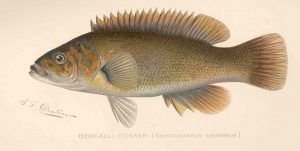
Methodology
Researchers observed fish in the field at 9 separate locations in the southern Gulf of Maine using video footage taken from July and August in 2015 and 2016. Each site was categorized as being dominated by kelp, dominated by turf algae, or being a mixture of the two. Researchers reviewed the footage, marked how many times the fish looked for shelter, how many times they searched for food, and what kind of algae they went to at each location.
For the refuge experiment, three species of algae were placed in a tank: 1) Dumontia contorta, a low-lying turf algae; 2) Dasysiphonia japonica, a slightly taller red alga; and 3) Ulva lactuca, a leafy green alga. U. lactuca replaced kelp in the experiment because it is still small enough to fit in the tank while providing a similar amount of protection from predators. One cunner was then placed in the tank with the three algae and observed undisturbed for an hour.
In the predation experiment, one of four separate species of algae were placed in a tank, and thirty isopods, tiny crustaceans, were released into the tank. A cunner was then placed in each tank for 3 hours. Afterward, the surviving isopods were counted, and the cunner’s ability to feed was compared to tanks without algae.
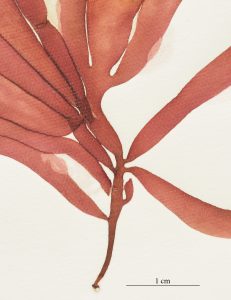
Results and Significance
The researchers found that the kind of algae available to cunner does change their behavior. In areas dominated by kelp, or where kelp was at least present, cunner preferred overwhelmingly to use the tall, complex algae as a place to hide. They sought refuge three times more in kelp than when they were in areas covered by low-lying turf algae. In the experiments testing refuge choice, cunner preferred U. lactuca, the stand-in algae for kelp. In fact, cunner seemed to prefer algae that were taller when seeking hiding spaces.
While the algae type had a clear impact on the hiding behaviors of cunner, the type of algae did not seem to influence cunner predatory behavior. Given kelp, turf algae, or simple algae, cunner consumed a similar number of isopods among these algae types.
It is clear that the type of algae available impacts how cunner behave, but what isn’t clear is what will happen if the cunner’s preferred algae, kelp, continues to disappear. While cunner will hide in turf algae, the researchers spotted them more easily in turf algae than in kelp. Could this mean that their numerous predators would be able to find them more easily? Since the experiment did not measure predation, we don’t have an answer to this.
Another thing that may change is how effectively cunner can feed. The experiment did determine that cunner have no more trouble eating isopods depending on the species of algae. However, cunner are opportunistic feeders; they eat a wide variety of animals. For example, cunner eat lobsters, which find shelter in kelp beds when they are young (Wahle and Steneck 1991). If kelp disappears, lobsters may be more vulnerable to being eaten by cunner, but cunner may also be more vulnerable to being eaten by their predators. Given how integral the lobster fishery is to the Maine economy, the implications of this change could be either positive or negative. What is evident is that a shift in the algae in Maine will change how animals behave and interact; whether or not the change is a good one is yet to be seen.
Richard A. Wahle, Robert S. Steneck. Recruitment habitats and nursery grounds of the American lobster Homarus americanus: a demographic bottleneck?. Marine Ecology Progress Series, 1991; 69: 3. pp 231-243.
I am a PhD student studying Biological Oceanography at the University of Rhode Island Graduate School of Oceanography. My interests are in food webs, ecology, and the interaction of humans and the ocean, whether that is in the form of fishing, pollution, climate change, or simply how we view the ocean. I am currently researching the decline of cancer crabs and lobsters in the Narragansett Bay.

